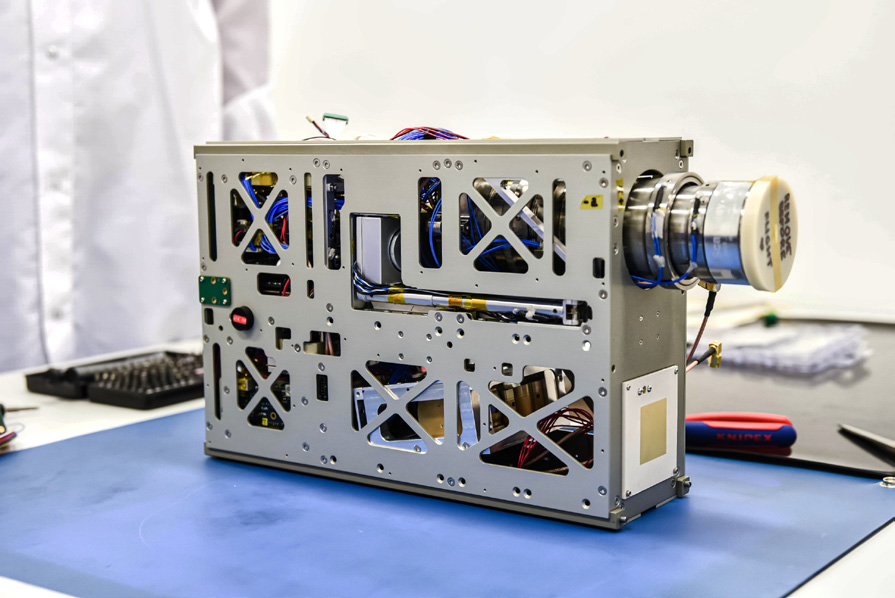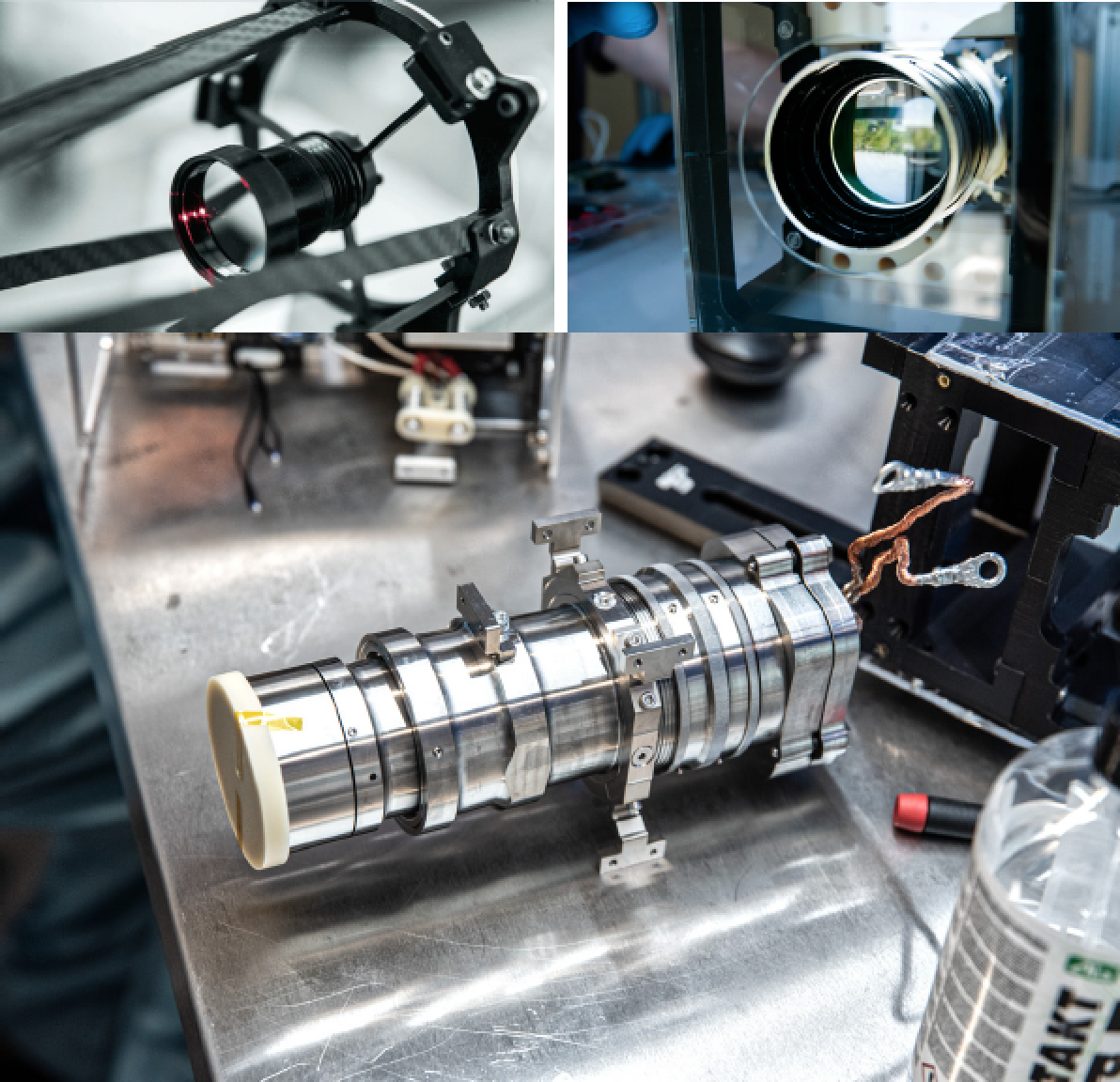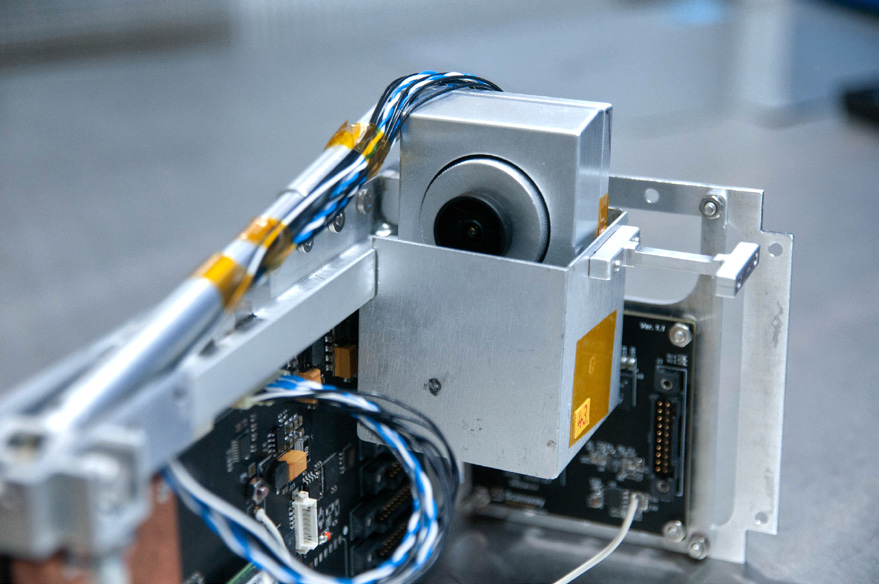The STAR VIBE mission launched from the Kennedy Space Center on January 3, 2023, aboard a SpaceX Falcon 9 during the Transporter 6 mission. After a flawless flight, the satellite was released into a Sun-Synchronous Orbit (SSO) where the mission began operations.
 The artistic rendition above is of Scanway’s first demo mission, whose primary goal is to verify the performance of two optical payloads: an EO telescope and a system for auto-inspection of satellites. The smallsat satellite was and developed by the company’s partner, German Orbital Systems. https://scanway.space/mission/star-vibe/
The artistic rendition above is of Scanway’s first demo mission, whose primary goal is to verify the performance of two optical payloads: an EO telescope and a system for auto-inspection of satellites. The smallsat satellite was and developed by the company’s partner, German Orbital Systems. https://scanway.space/mission/star-vibe/
The Satellite’s Purpose STAR VIBE is a demonstration mission that presents two innovative systems — the Small Telescope for Advanced Reconnaissance and the Vision Inspection Boom Experiment (a subsystem of SHS). This mission is a collaboration between two companies — Scanway and German Orbital System (GOS), the latter responsible for the satellite’s structure (a 6U CubeSat).
The goal of the mission is to test the technology in Low Earth Orbit (LEO) and raise the Technology Readiness Level (TRL) to level nine, which is the highest level of technology readiness and signifies a technology that is ready for deployment and can be introduced to the market as a full-fledged product.
During the mission, many images will eventually be captured with the STAR telescope, which will verify design intent. With the VIBE system, Scanway wants to inspect the condition of the satellite’s surface.
STAR Telescope
The STAR telescope is a telescope that sees the world in the visible spectrum. The unit takes images with a resolution of 25 meters per pixel and provides a large field of view (102.4 x 76.8 km). These parameters enable rapid data collection for many different purposes that range from climate change to supporting efficient agriculture.
In spite of the powerful features, the telescope is compact and lightweight and fits into a small rectangular box measuring 210x77x100 mm (i.e., 2U in size) and weighs 1.2 kg.
The fact that this telescope has a low weight despite impressive capabilities is a significant benefit. This is because the cost of launching it into orbit increases as the payload’s mass increases.
The STAR telescope is not a separate product but part of a product line — SOP, the Scanway Optical Payload. These telescopes are specifically designed to be used with smallsats.

The Scanway 6U CubeSat with STAR telescope +
VIBE payload
Scanway’s Optical Payload is offered in various configurations and can be equipped with detectors for different spectrum bands (VIS, NIR, SWIR) based on the user’s needs. The imaging resolution can also vary among the different configurations.
SHS, VIBE + Use Cases
SHS — Spacecraft Health Scanner — is the name for the system created for self-inspection and self-diagnosis of satellites and rockets. The software responsible for data collection and analysis combines advanced technolog based on artificial intelligence and machine learning (AI / ML) with a traditional, mathematical approach that integrates data from both sensors (temperature, UV, radiation, etc.) and cameras.
By using a combination of these approaches, the best results can be achieved while maintaining a high level of accuracy and safety, particularly in environments where these factors are of the utmost importance. In addition to its primary function of detecting faults,
SHS has the ability to track the degradation of components over extended periods. The collected data can be used to reach conclusions and develop solutions that can be easily incorporated into future designs, reducing downtimes and eliminating risks.

Photos above: The Scanway Optical Payload (SOP
The VIBE system is one of the most important configurations of the SHS system. It is a camera located on a retractable beam that extends while on-obit. The camera is connected to the onboard computer.
A system with such wide application has many use cases. For example, it is able to analyze damage to the solar panels — both resulting from natural degradation occurring with the duration of the mission as well as from unexpected damage, such as impacts from micrometeorites or space debris.
The behavior of the AI analyzing example damage to the solar panels has been tested under a wide range of lighting conditions that resemble those that will exist on-orbit. Another use case could well be the observation of processes that take part in the vehicle, such as separation or release events.
An example of an SHS potential use case is a technical problem encountered by the Lucy probe launched by an Atlas V rocket in 2021 to investigate the Trojan asteroids. During the unfolding of the solar arrays, a problem was encountered when one of the solar arrays was not latched into its position.
Confirming this failure and subsequent analysis required a lot of work, due to the fact that no camera was observing the solar arrays. The testing required vibrations measurements (caused by the maneuvering engines of the probe) and then comparing the obtained data with an accurate computer model of the motor that opened the solar arrays.
Those steps made it possible to measure the stiffness of the partially unfolded array and, finally, the degree of the array’s deployment. Having a system with the capabilities of the SHS with the cameras and sensors pointing at the solar arrays of the probe would have made the life of the mission engineers far easier.

Photo of Scanway’s Spacecraft Health Scanner (SHS).
SHS technology serves the purpose of controlling space hardware. Once a component is launched into space, it cannot be adjusted or repaired.
The prediction is that four times as many satellites will be launched in the next nine years as compared to the previous nine years. With approximately 80% of satellite failures attributed to design flaws, it is crucial to be able to determine the cause of the issue.
Inspection systems such as SHS have broad market potential and offer various applications for diagnosing satellites (per the “Smallsats by the Numbers” report from Bryce Tech in 2022).

Photo of the Scanway Spacecraft Health Scanner (SHS).
The SHS system has the potential to greatly benefit the industry in two ways. First, the system is a reliable solution for the well-known problem of in-space servicing and manufacturing, as every robotized service or manufacturing process needs to be monitored and controlled. In space, using vision systems like SHS is the most effective way to accomplish these tasks.
The second problem is the undefined issue of spacecraft self-diagnosis, which is just as important as in-space servicing in terms of helping spacecraft developers create more efficient vehicles and reducing costs and space debris. Spacecraft Health Scanner is set to be used on the Ariane 6 rocket, which is due to make its first flight as early as this year. Scanway is responsible for developing the cameras used to inspect and confirm events like the release of CubeSats and the separation of fairings.
The STAR + VIBE Mission
Since the mission’s launch, 200 communication sessions have been conducted, along with 20 imaging sessions, resulting in more than 80 usable images of the Earth’s surface, showcasing various areas that have include the Ukraine, Australia, Italy, Iran, Russia and other countries. These are the most accurate images of Earth from space ever taken by a Polish space instrument.
Although only compressed versions of the images taken have been downloaded from the satellite, they have already provided a valuable source of highly accurate information about the Earth.

Engineers working at the mission control center are steadily increasing the speed of transmission from orbit, and full, even higher resolution images from orbit will soon be available. Regardless of the lower-than-target resolution of the images, the mission’s goal of verifying the operation of the subsystems has been achieved.
Given the emerging demand for the imaging provided by the STAR VIBE mission, the on-orbit mission time has been officially extended by 12 months, which is of additiona usel for the company in terms of the mission’s second instrument, VIBE. A number of experiments and observation sessions from this instrument will be performed by the company in the coming weeks.
Scanway is SME company from Poland, operating as a team of 30 engineers and specialist. The company focuses on two branches – Industry and Space. Scanway’s projects make it possible to observe any object or area in a precise, continuous manner or with an accuracy far greater than that of the human eye. Scanway is currently busy preparing for next missions, the first of which will launch into orbit as early as 2023. That will be Eagle Eye mission, which will be placed in a 350 km orbit - it is the largest telescope successfully developed in Poland, which allows observation in visible light (three separate bands — red, green, blue) and infrared, with approx. 1 m GSD.
scanway.space

In addition to author Maciej Kupras’ work at Scanway, he is studying for a master’s degree in Aerospace Engineering at the Warsaw University of Technology. His research interests include CFD and rocket technology. In his spare time he enjoys sailing, skiing and photographing the world around him.


